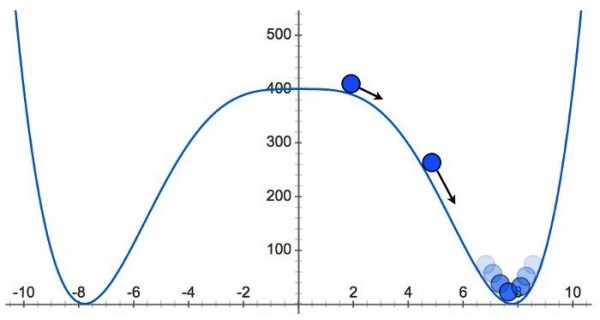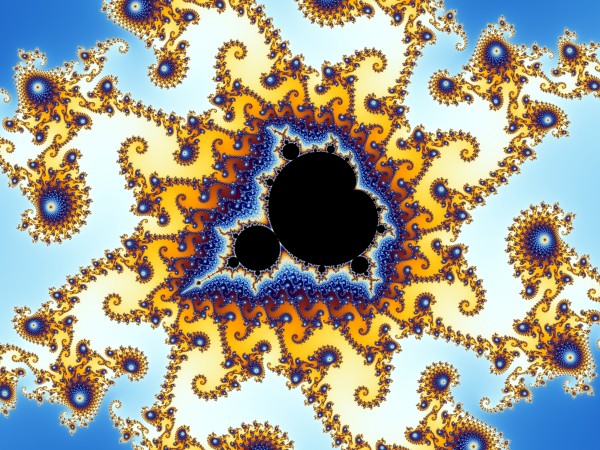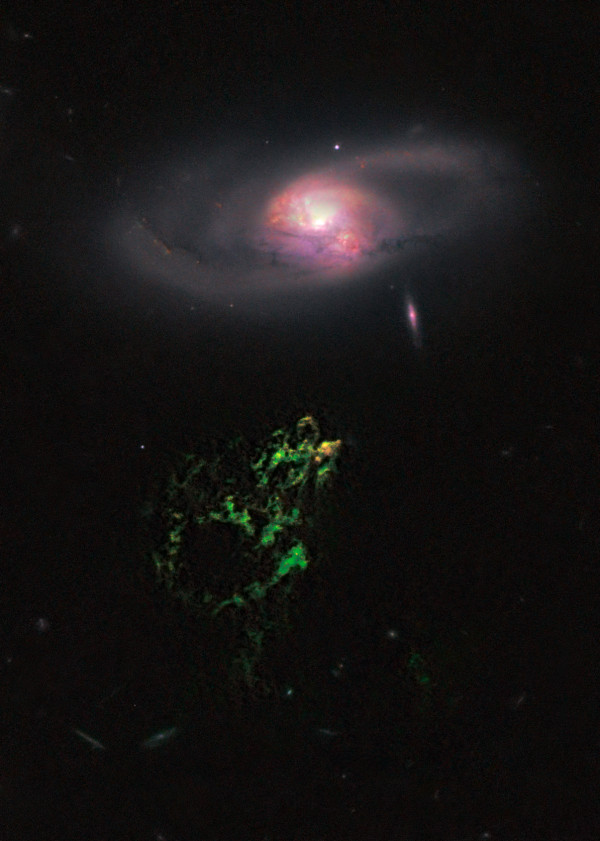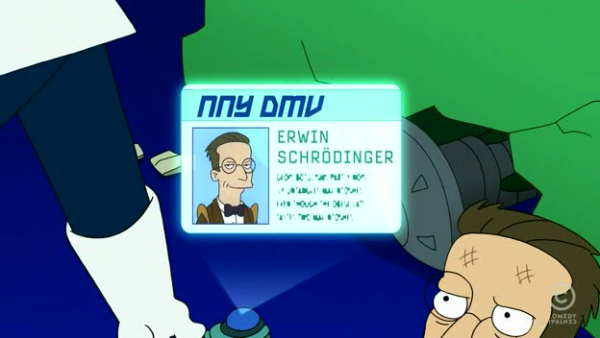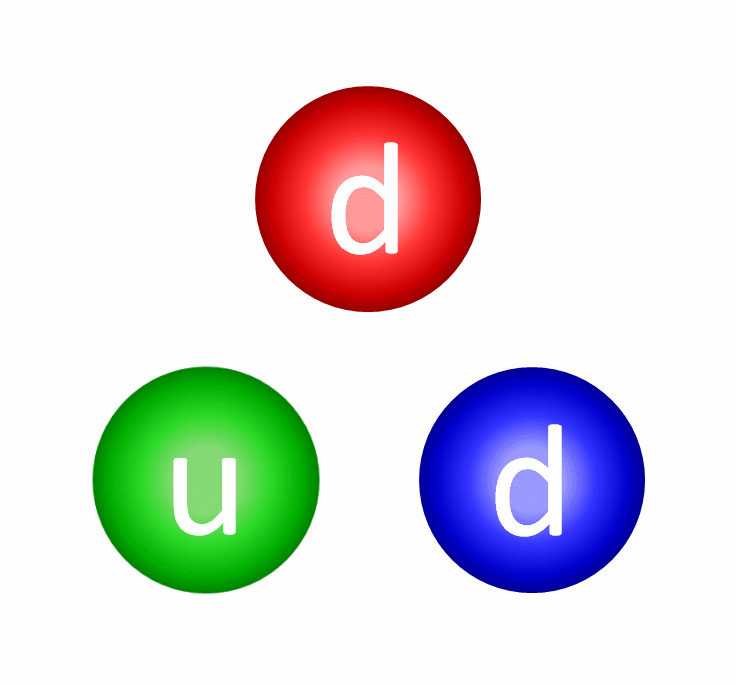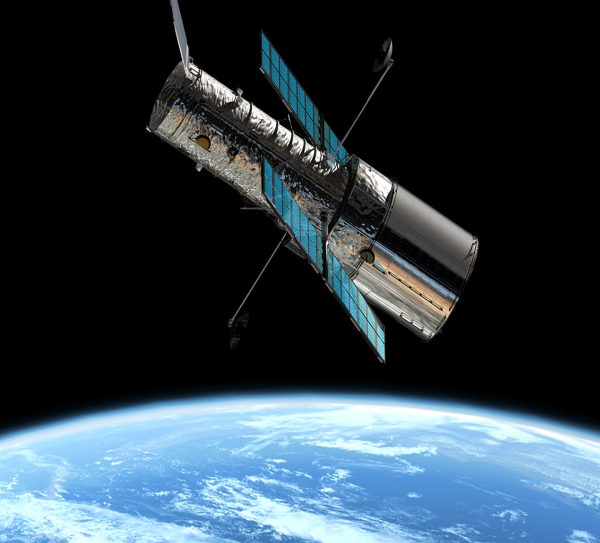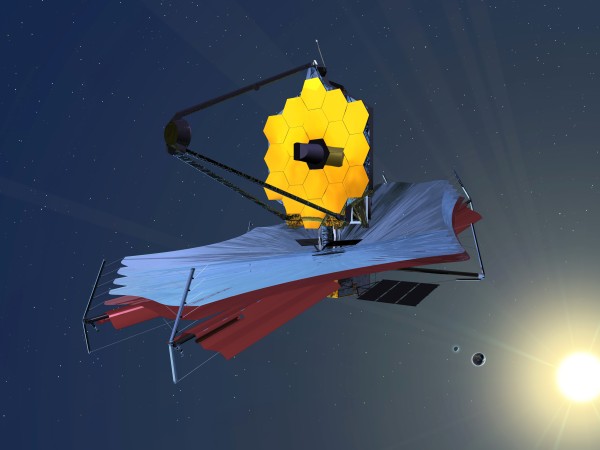“The voyage of discovery is not in seeking new landscapes but in having new eyes.” -Marcel Proust
As another fine week comes to a close at Starts With A Bang, let's take a look back at all the topics we've taken on:
- Where did light first come from? (for Ask Ethan),
- Zooming into a fractal (for our Weekend Diversion),
- Space turns green on 4/20 (for Mostly Mute Monday),
- The illusion of reality (a great contribution from Brian Koberlein),
- Everybody wants to rule the quantum world (a special extra from Paul Halpern),
- Earth day in the Universe,
- What is the strong force? (for Throwback Thursday), and
- Hubble's deepest look (a Hubble 25th anniversary special from James Bullock).
In addition to all that, I wrote a new piece over at Forbes:
Despite all of this, most of you didn’t miss a beat, and responded with a huge number of excellent comments. Let’s take a look at the best of them for our Comments of the Week!
From Mia on the origin of light: "What came before light? What a question. But we can never be just quite sure of what or how it happened. How and what was first in this universe. Trying to discover more only leads to another unanswered question."
You have to be careful that you don't slide into solipsism here. Just because we can't be sure in the "100% certainty" sense -- which we never can be in science -- that doesn't mean we don't know the answer to an incredibly high degree of confidence. In science, certainty is a fickle thing because it presupposes that your current understanding couldn't be overturned by discovering something new, and there are presumably always new things that could potentially be there.
But this question in particular -- what came before light -- does have an answer to the limits that we can know anything in science: cosmological inflation.
Now the particulars of how, exactly, inflation ended, coupled to matter/antimatter/radiation and "dumped" its energy into it is what's unknown, and what we'd need to know if we wanted to turn my "bowling ball rolling over blocks" analogy into something with more certainty.
But don't be fooled: just because we don't know absolutely everything with 100% certainty as respects a problem doesn't mean we can't give the best answer that our scientific knowledge has thus far. That answer might get better with time, it might change, and it might need revision, but it's the best (and in many ways, the only) steps towards an actual answer we've ever taken.
From Mike from Ottawa on zooming into a fractal: "The point it is zooming into is a point on the complex number plane, and the real and imaginary components will be real numbers, rather than rational."
You can pick any arbitrary point in the complex plane and zoom in as arbitrarily far as you want to explore the Mandelbrot set. The difficulty, computationally, is to find an interesting point that remains as intricate and that contains the border between what is and isn't contained in the set at every level of zoom. In addition, you'll probably want to find points that also showcase the seahorses, elephants, "mini-Mandelbrots" and other visually exciting features. It's the border of what is and isn't contained in the set that's the most interesting here, and our ability to explore it is only limited by our computational power and -- in this case -- our methods of visualization.
From Ragtag Media on Voorwerps (for 4/20): "That does look like bud..cool, even the trichome development is there. I’d say those galaxies are in the “window of peak maturity”."
Just in case you didn't know, Voorwerp is simply the Dutch word for "object," as the object's discoverer, Hanny van Arkel, is from the Netherlands. Hmm... Netherlands, green, trichome structure, 4/20... it's almost like the Universe planned this.
Images credit: NASA. The Crab Nebula at radio, infrared and visible wavelengths. Bottom Row (left to right): ultraviolet, x-ray, and a false-color composition of the full range.
From EyeOnTheSky respecting images and false coloring: "What I’m trying to say is that the human color perception system is very complex and still full of mysteries. So at this point trying to argue that one set of color renderings is more accurate or truthful than another is sheer speculation. Let’s wait until the astronauts get back from Jupiter and they can tell us what the planet really looks like."
I think the whole point of Brian's article actually ties in very nicely with the lesson to be learned from the Mandelbrot fractal visualization: we like to think that "seeing" is sort of the ultimate arbiter of reality. "Seeing is believing," right? Only what we see varies tremendously dependent on all sorts of conditions, and astronauts, in particular, actually go blind in space. Which is to say, if you want to "see" something, I would go with the visualization that encodes the greatest amount of relevant information for you.
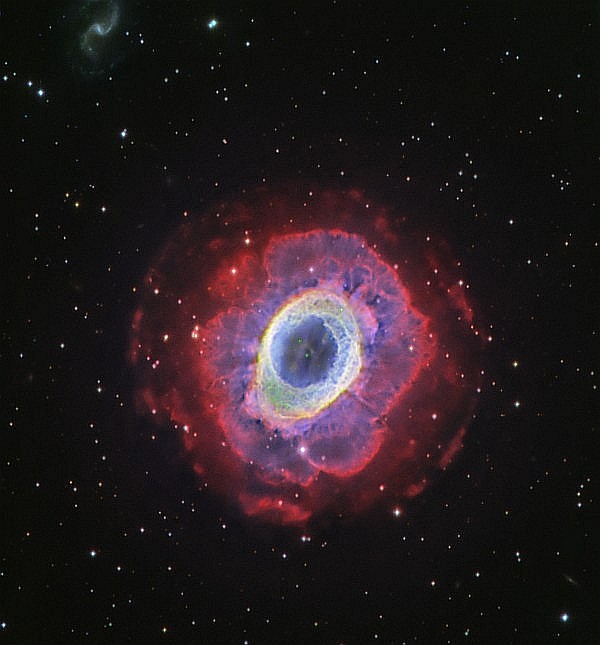 Image credit: D. López (IAC), which is A. Oscoz, D. López, P. Rodríguez-Gil and L. Chinarro, from http://www.ing.iac.es/.
Image credit: D. López (IAC), which is A. Oscoz, D. López, P. Rodríguez-Gil and L. Chinarro, from http://www.ing.iac.es/.
No human would ever "see" anything like this, with your eyes, if you looked at the Ring Nebula. But if you want to know where the gas, dust, various elements, central star, background stars, etc., are actually located, this is a spectacular view.
I think it's very important to get away from the notion of what you'd "actually see," as that's unnecessarily restrictive. Instead, perhaps we should focus on what's actually there, and use the tools available to us to highlight the information we want everyone to know.
Image credit: courtesy of http://afriedman.org/.
From mansour daftarian on quantum mechanics, nature and reality: "I agree with you that the introduction and the development of the quantum theory helped us to better perceive that we have a long way to go, but the pace of our understandings of the universe in the past five decades, support the idea that we will eventually discover all the rules of our deterministic Universe."
First off, Sean T's comment immediately following was a very good response:
You have it precisely backwards. The more we investigate into quantum mechanics, the more it looks like the universe is not deterministic. During the development of QM, one of the ideas that physicists had at the time was that there were “hidden variables” that could account for the seemingly random behavior of quantum systems. To give an analogy, if you flip a fair coin, the side that the coin lands on seems to be random. However, that’s because we lack sufficient information about the initial velocity and rotation speed of the coin. If we knew these “hidden variables” to a greater precision, we would be able to predict the side that the coin will land on.
In similar vein, it was believed by some scientists that, while the behavior of quantum particles was seemingly random, there were actually factors that we just were not able to account for well enough, ie. hidden variables, and that the particles’ behavior was actually deterministic. We now have experimental proof that there are no hidden variables. The proof is a bit complex, but nonetheless valid. Google “Bell’s Inequality” for more information.
It's very difficult to maintain a deterministic Universe. If you want there to be hidden variables, you can connive a scenario where they're present, but then you have to give up something else that's important, like locality, where two things need to be connected in space and time to affect one another. The whole point of quantum mechanics -- at least to me -- is that there's this inherent weirdness to the Universe that defies our intuition. We cannot derive the Universe purely from reason or elegance; we would get the wrong answer due to our faulty notions of what's reasonable or elegant.
If you want to understand the Universe, you have to ask it questions about itself, find the mathematical framework that accurately describes it, use that framework to make additional predictions, and then make a self-consistent, overarching physical theory describing it. In many ways, quantum theory is still incomplete, as it doesn't incorporate gravitation in it, and it's only a perturbatively solvable system even at its best.
Perhaps in our lifetimes, we'll see the next great leap taken, but we won't find a classical, deterministic, local, real, positive definite Universe at the end. There is inherent randomness and uncertainty that's truly a part of our natural world.
From Gary S on how forces work at a quantum level: "I’ve been wondering – how can an exchange of photons result in attraction between opposite electric charges? It would seem that this would always cause a repulsion, since photons have momentum."
These are all analogies, you must realize. These are ways of speaking, in ways we're used to comprehending, about things that have no true analogy to any of our experiences. So what I want you to imagine is not an actual energy-and-momentum carrying photon, but imagine that you have (and this isn't what happens, but just imagine), emanating outward in all directions, photons with real (positive) energy and momentum, and also photons with negative energy and momentum. In other words, if all you had was one charged particle, it would be emitting everything in all directions in empty space.
Now imagine you bring in a second particle. If it's of the same charge, it's going to absorb only the positive energy ones, repelling, while if it's the opposite charge, it absorbs the negative energy ones, attracting.
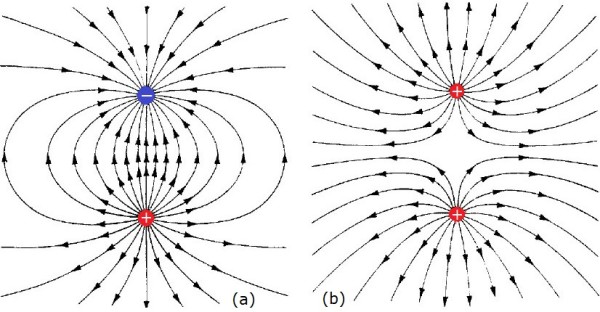 Image credit: The Mysearch Website copyright ©: 2004-2015, via http://www.mysearch.org.uk/website1/html/479.Fieldlines.html.
Image credit: The Mysearch Website copyright ©: 2004-2015, via http://www.mysearch.org.uk/website1/html/479.Fieldlines.html.
Oppositely charged particles end up more tightly bound, while like charged ones end up more loosely bound. It takes energy to bring like charges together (you've got to fight the photons), while it takes energy to keep opposite charges apart. This is easy to visualize classically with electric fields (above), but it's much more difficult to visualize integrating over all possible paths of virtual particles. Still, they're mathematically equivalent, but I always encourage you to go with the simplest model of what's going to work for your problem in question.
And finally, from Denier on Hubble and Hubble's successor: "I am excited about the JW[S]T but will really miss the upgradeability of Hubble. The optics were fixed in 1993. The original ACS camera and STIS cameras have both been replace[d] with new and better hardware. They just added a new 3rd Gen Wide Field Camera, fixed all the servos and batteries. Hubble is now 90 times more powerful than originally designed to be. It now resolves 900 galaxies where the original instrumentation could only see 10.
JW[S]T is a nice piece of hardware for sure, but there is something to be said for being able to tinker under the hood every so often. Long live Hubble."
There is a lot to worry about when it comes to James Webb, and this is one sore point for certain. WFIRST is more analogous to a Hubble successor, but even that is a good 10+ years out and not nearly as big a leap forward as JWST is. There are good reasons to be at the L2 Lagrange point rather than in low-Earth orbit, the biggest two of which are gravitational torques and thermal effects. Unlike Hubble, we're not planning on needing replacement gyroscopes for JWST, and unlike Hubble, we need to keep JWST very, very cool in order to take the long-wavelength observations it's designed for. And instead of orbiting Earth once every 90 minutes, it makes a quasi-orbit around the L2 point every six months or so, a much slower path.
So there are advantages. All of that said, though, I would like JWST to be upgradeable, as Hubble is. I would like to see our rapidly advancing technology put to good use aboard our highest-tech devices in space. But the reality is this: until we truly value science as a society, until we recognize the value of pure research and actually invest in it big time, we're going to be squabbling over table scraps, arguing about one limited scenario versus another.
Perhaps someday, perhaps even someday soon, we'll start uniting as a people and demanding that we take the steps to advance humanity, together. That's the promise of science, of technology, of knowledge and of innovation. And that's my hope, too.
- Log in to post comments


